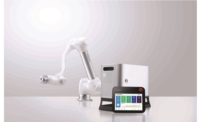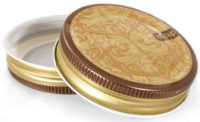Materials
Tethered Caps & Lids Find a Home
The EU recently introduced a directive on marine plastic litter, and tethered caps and closures play an important role.

In May 2019, the Council of the European Union adopted the Single-Use Plastics (SUP) directive proposed by the Juncker Commission as an essential element of its Circular Economy Action Plan to reduce marine plastic litter. Until May next year, the EU member states have to implement this directive into their national legislation, leading to a ban of these corresponding products from the market, whenever affordable alternatives are available. As a result, obligatory tethered caps and lids are about to be introduced, which will be designed to remain attached to bottles. This is valid for all beverage containers up to three liters, five years after the entry into force of the directive. Thus, this decision will oblige EU producers, retailers and manufacturers, as well as importers, to implement new closures by May 2024. Beyond Europe, other countries and states — for example, in the U.S. — are aiming at similar measures.
Here, Vincent Le Guen, vice president of packaging at Sidel, answers questions about the new regulation to explain how to prepare for the change, as well as the challenges and solutions.
How do you prepare for the tethered cap regulation?
We are an active member of Cetie, an international association publishing and managing technical reference documentation on PET bottle neck standardization. Gathering experts from member companies and federations, Cetie is committed to promoting industrial best practices and consensual specifications for bottling industries worldwide.
Currently, Cetie is working on the specifications of compliant necks for tethered caps. It also represents the right forum to exchange information and knowledge about the European Single Use Plastic Directive. As an equipment and services supplier for the bottling industry, we partner with the main closure suppliers that our customers are working with to be involved early in the decision-making process, to identify future standards for tethered caps and to test and qualify suitable solutions.
What is the biggest challenge for Sidel during this regulation change?
Across the value chain, we all share a common objective: On top of being the best technical solution, tethered caps need to improve the consumer experience, to be sustainable and to not degrade the perception of PET. With this in mind, and taking into account the outcomes of the various discussions taking place around standardisation of tethered caps, we are getting ready to adapt our equipment-installed base accordingly and launch next generation solutions that are tethered caps-compliant.
In this regard, beverage players may want, as a first step, to stick to the same neck finish and cap dimension they are currently using, therefore minimizing the changes needed on their lines and, as a consequence, the costs they may incur. This solution is easy to implement but could also easily degrade consumer experience. At Sidel, we are recommending a long-term approach, lightweighting both the neck finish and the closure, thus, gaining real environmental benefits. This step would transform tethered cap implementation from a constraint to an opportunity. We are working closely with our customers to help them be future-ready by fully capturing their specifications and the inherent challenges of their supply chain.
Does Sidel have any solutions in their portfolio for this yet?
Sidel is not a cap and closure provider: We supply equipment and services to brand owners, co-packers and manufacturers active in the beverage sector. Our role is to make sure that we have the right equipment to integrate this generation of closures. With this goal in mind, we are exchanging knowledge with all of the key stakeholders in the value chain on a daily basis. This is also key to support our customers in selecting raw materials to complement the bottle system, such as labels and caps.
It is interesting to note that, depending on the beverage category, impacts generated by tethered cap implementation may vary. For instance, water bottling is less demanding in terms of specifications; therefore, tethered caps in this segment already represent a reality. This type of closure is gaining wider and wider acceptance from a sustainability and economic perspective, while enhancing consumer experience.
In terms of sensitive products in PET (i.e. juices, nectars, isotonics, teas and liquid dairy products), we have developed very specific testing protocols, meeting the high demands imposed by this type of beverage in terms of food safety and organoleptic properties. We are taking the same approach to tethered caps intended to complete the bottles used in that drink segment. Carbonated soft drinks (CSD) represent one of the biggest challenges, as these require strong technical specifications to ensure safety for consumers, shelf life, and an ideal consumer experience. This is where we expect closure suppliers to propose solutions able to gain consumer acceptance, while complying with the European Single Use Plastic Directive.
Overall, consider the measures around tethered cap implementation by 2024 as much more than an industrial project. We see it more as a powerful opportunity for packaging optimization, a better consumer experience, a catchier look and feel, greater sustainability, long-term advantages, and an improved perception of PET benefits — especially its 100% recyclability. With this in mind, we have already converted a few PET packaging lines for major players in Europe to tethered caps.
Have you encountered any technical difficulties so far and how can innovations help to solve them?
Within the Sidel Group, Novembal designs, patents and produces plastic caps and closures for beverage manufacturers. By meeting the recently issued regulations while also ensuring the essential role played by the cap (i.e. to maintain package integrity while protecting the drink inside, thus greatly contributing to an ideal consumer experience), they have recently introduced solutions that enable bottled drink manufacturers to switch to tethered closures.
This starts with the Novembal tethered solution for snap-type closures, which has been created specifically for those bottled water producers who are ready to invest a bit to gain advantages from the perspective of sustainability and end user convenience. Its internal lip ensures a tight seal with the neck, while you can close the bottle by simply pushing the top of the cap on it. In addition, it delivers great performance on high-speed lines and offers good design flexibility. On the other hand, carbonated soft drinks, water and sensitive products players might opt for Novembal’s “mixed design” caps. They combine the tightness offered by screw-type closures with the opening experience as provided by snap-type closures, typically making it a solution for premium products.
Is a complete renewal of the installed machine base necessary?
Not at all. Our customers mainly have to upgrade their existing bottling lines, replacing the customized parts in contact with the bottleneck and cap rather than replacing any piece of equipment. Depending on how much the new neck finish and cap differ from the ones they are currently using, they may need to invest in new closure and preform injection tools.
Does this directive have an immediate effect on other parts of the world?
At present, the directive applies only to Europe. However, there are similar discussions going on in California — attempting to ban the production and sale of single-use plastics as well as to recycle 75% of single-use plastics by 2030 due to the pressure caused by China’s plastic waste import ban — while other countries are closely following the developments imposed by the Single Use Plastic Directive. Once the new standard for tethered caps is defined, global brand owners may also think about implementing them worldwide in the medium term, potentially expanding this opportunity beyond European borders.
1 https://ec.europa.eu/commission/presscorner/detail/en/ IP_19_2631
Sidel is a leading provider of equipment and services solutions for packaging beverage, food, home and personal care products in PET, can, glass and other materials. With over 40,000 machines installed in more than 190 countries, the company has nearly 170 years of proven experience, with a strong focus on the factory of tomorrow with advanced systems, line engineering and innovation.
Looking for a reprint of this article?
From high-res PDFs to custom plaques, order your copy today!








